My First Elk Hunt

Two years ago I had the pleasure of going on the first hunting trip of what would become Sacred Hunting.
The founder and guide, Mansal, has been a good friend for years, and when he mentioned organizing an "intermediate" trip for alums of his intro hunts, I was intrigued.
When he said the hunt would be for Elk in the mountains of Colorado, I knew I had to go.
Over the course of six months I'd need to seriously level up my gear and hunting proficiency, and then hopefully get an elk by the end of it. Hiking for miles through the snow looking for elk is wildly different from sitting in hunting blinds in Texas, but I was excited about the challenge and couldn't wait to get started.
Why Hunt
It's easy to forget where meat comes from.
When you go to the grocery store and buy a steak, it has a standard shape and gets wrapped in plastic like anything else you purchase. You could be forgiven for forgetting there's anything different about opening a package of meat and opening a package of strawberries.
But an animal has to die for you to eat meat. And though grocery stores help us remain blissfully ignorant of that fact, eating meat means death, whether you do the killing with a gun or your credit card.
The more removed you are from harvesting the animal yourself, the more suffering you're likely inflicting. Grocery store meat, the most removed you can get from the process, is raised in disgusting conditions that ruin the health and happiness of the animals. Go to a butcher shop and you'll see more death on display, but you’re likely meeting someone who cares much more about the conditions they source their animals from.
Unless you kill an animal yourself, in the wild, you don't know what conditions it lived in and how it died. Many "pasture raised" animals aren't living quite as happy a life as the marketing makes you think.
While I'm not at the point where I only eat meat that I've harvested, I'm concerned about animal ethics and try to only eat ethically sourced meat whenever possible.
I knew this trip, were it successful, would give us a huge amount of meat to share over the next few months, and that elk was some of the tastiest game out there. These animals were running wild in the Colorado mountains, as free as it gets, and if we did our job right, their death would be extremely fast.
But for that to happen, we needed to be prepared.
Preparation
Hunting in normal conditions is challenging. Hunting in sub-freezing temperatures with miles of hiking through the snow at 9,000 feet of elevation is a beast of its own.
The most essential preparation for any hunt is knowing you can confidently take a shot at the distance and on the target size you'll be working with. Ethical hunting means doing everything in your power to avoid causing undue suffering, which requires you to be extremely accurate and calm under pressure.
For hunting in Texas, I had only needed to be accurate within a dinner plate at 100 yards. That's a level of accuracy most people can learn in an afternoon at the gun range with a modest rifle. If you decided you wanted to go deer or boar hunting in Texas, you could buy your rifle Wednesday, practice Thursday, and go hunting Friday.
For the elk hunt, the target was bigger, but the distance was significantly farther. We weren't using blinds or feeders, which meant we couldn't control how far the animals would be, and it was likely the closest we'd get is 200 to 300 yards.
Reliably hitting a large dinner plate at 300 yards isn't something most people can quickly learn on their own, so Mansal hired a former Navy SEAL and Marine Sniper, Clay, to train us.
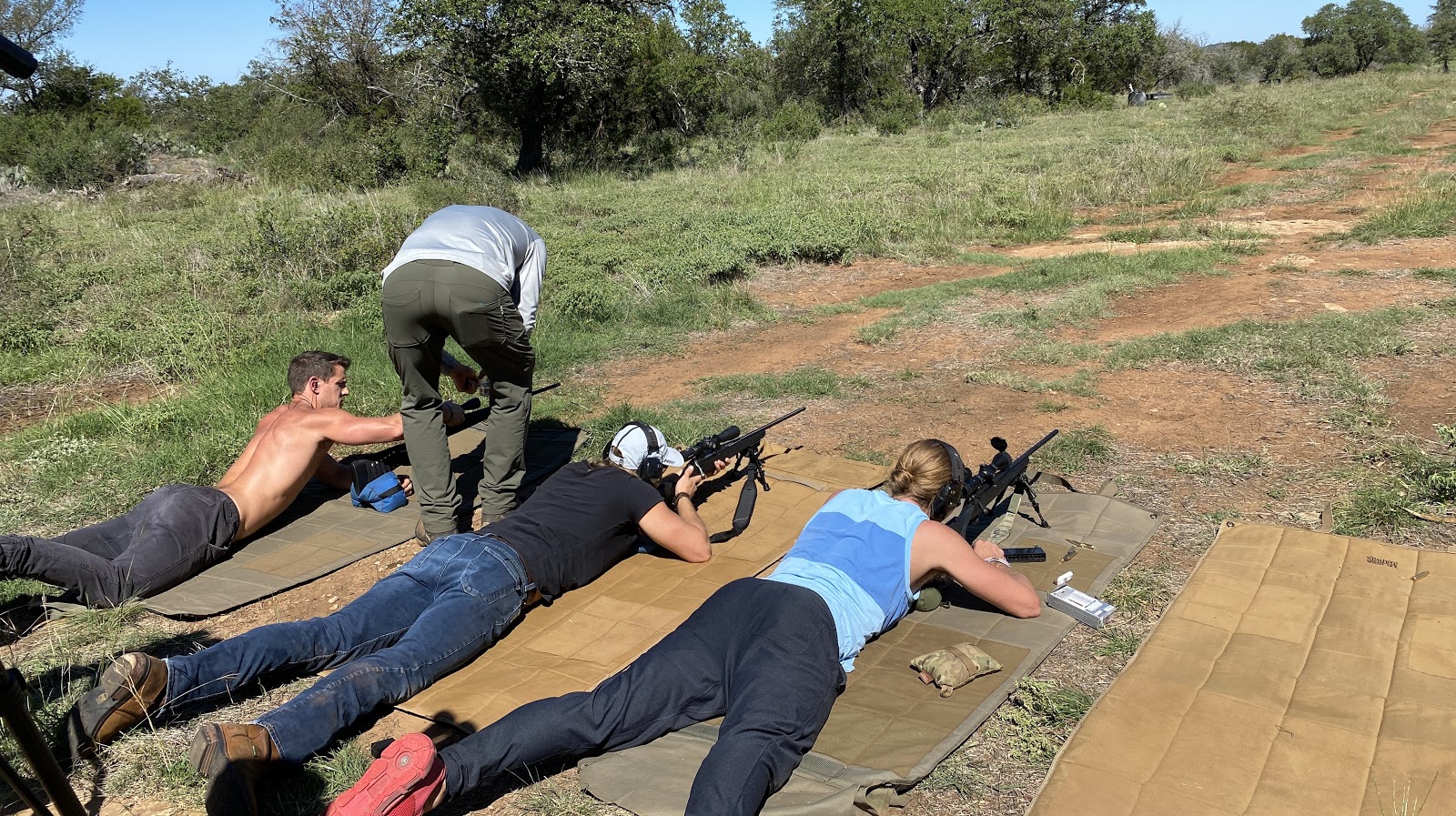
Clay held an 8 hour long workshop focused on rifle positioning, posture, breathing, trigger discipline, and everything else we needed to reliably be on target at 300 yards. By the end of it, I was consistently hitting the elk sized target, and managed to hit a target the size of a deer's heart 2/3 of the time at 300 yards. That's about a 6-inch diameter circle three football fields away, which is kinda crazy.
One thing we didn't do as much of, which I want to practice more now, is having to rapidly get in position and take a shot. Being accurate at 300 yards while lying prone and having all the time in the world is great, but it's not what happens in the wild. One very helpful thing we did practice, though, was taking multiple shots in rapid succession. Elk are big animals, and one shot might not be enough, so we needed to be ready to reload and get off a second or third shot if possible.
With our shooting dialed in, and a list of other gear to get to prepare, we were feeling ready for the hunt. A few weeks later I loaded up my truck and made the 17 hour trip up to Steamboat Springs, Colorado.
The drive was fairly uneventful, and while the northwestern Texas landscape was pretty dull, the drive through Colorado was incredible. There’s something really special about driving through snow covered mountains like that.
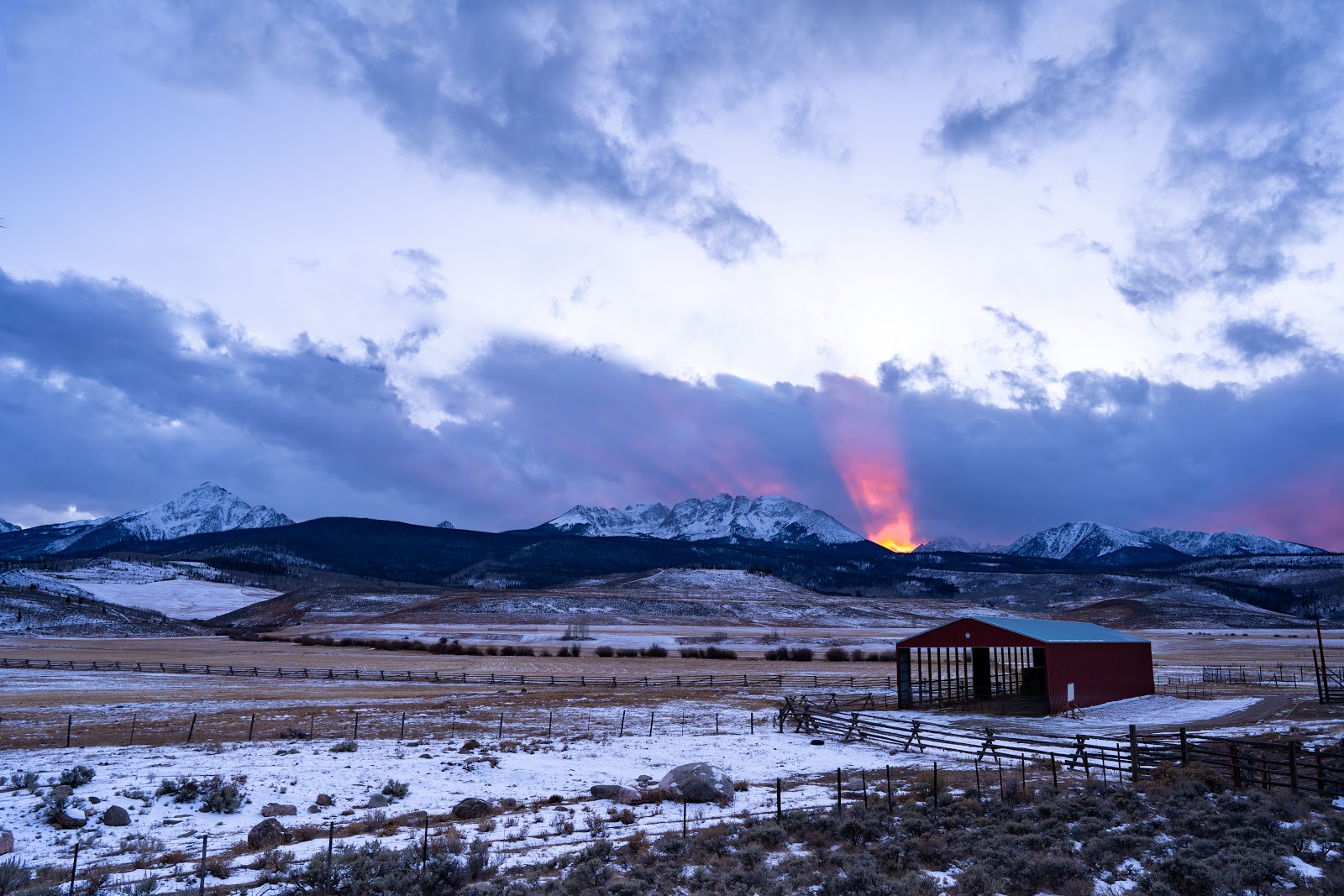
I made it to our first cabin, got unpacked for the night, and we all got acquainted before going to bed. There were five other guys on the hunt, plus Mansal, so we had a really good group.
Tomorrow would be the first part of our sacred hunting experience, the medicine hike.
The Medicine Hike
A core part of sacred hunting is the integration of plant medicine to facilitate introspection going into the hunt. While I'm no stranger to plant medicine, I'd never used it quite like this.
After the medicine ceremony, we set off on a challenging hike in the newly fallen snow. As part of the ceremony, we did the hike in silence, giving us time to work through anything we were learning from interfacing with the medicine.
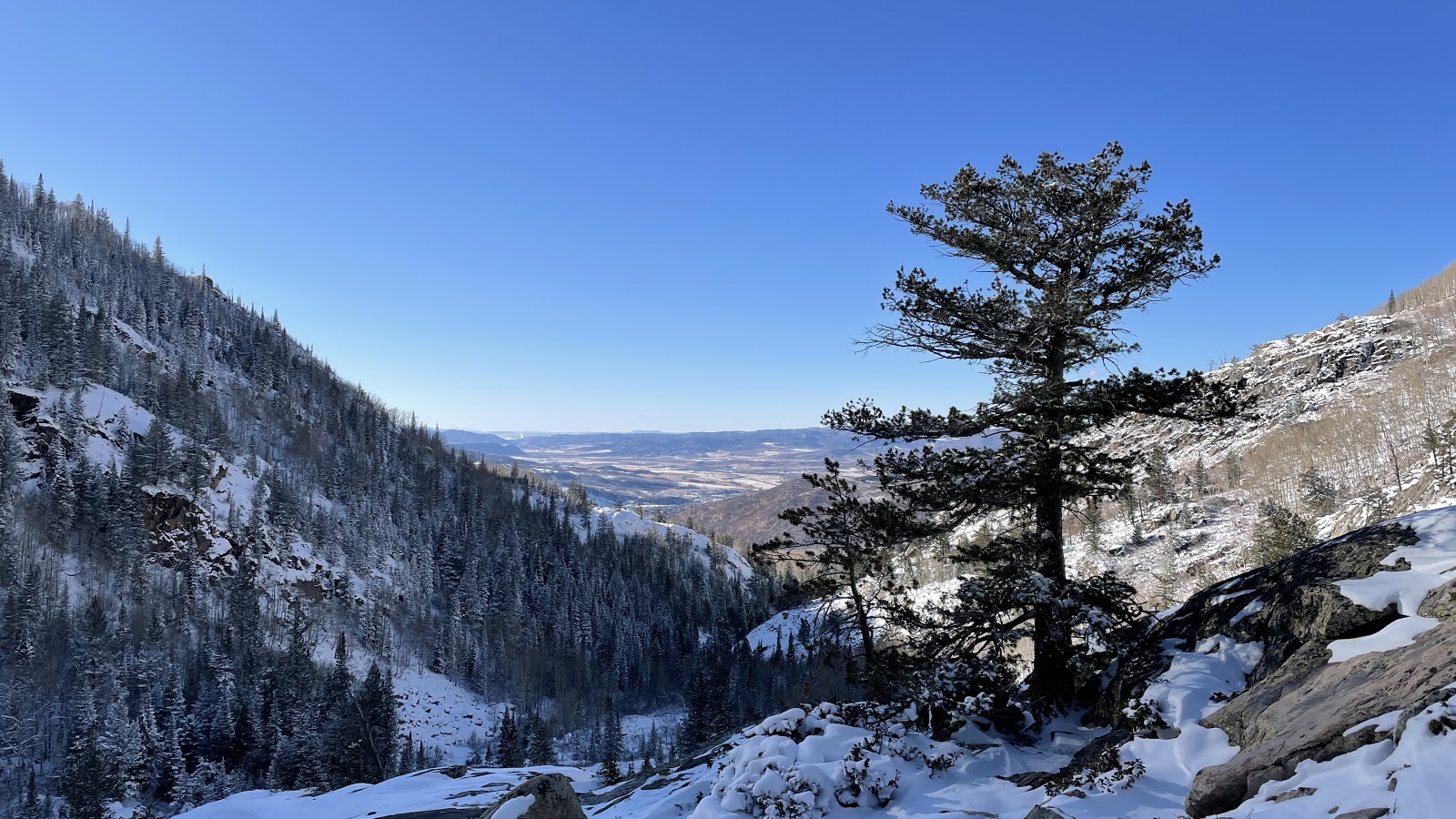
This was among the more powerful, introspective experiences of my life. Something about the ceremony, beautiful setting, challenging physical work, and strong medicine, combined into an extremely deep trance state that I hadn't been in before. Weeks later I'm still working on integrating and reflecting on all of it, but needless to say it's going to influence my writing for the next few months, and it dramatically shifted my perspective on my life and work.
Each of us hiked in silence working through our own internal dialogues, and when we got to the top, we broke the silence to laugh and play in the snow together.
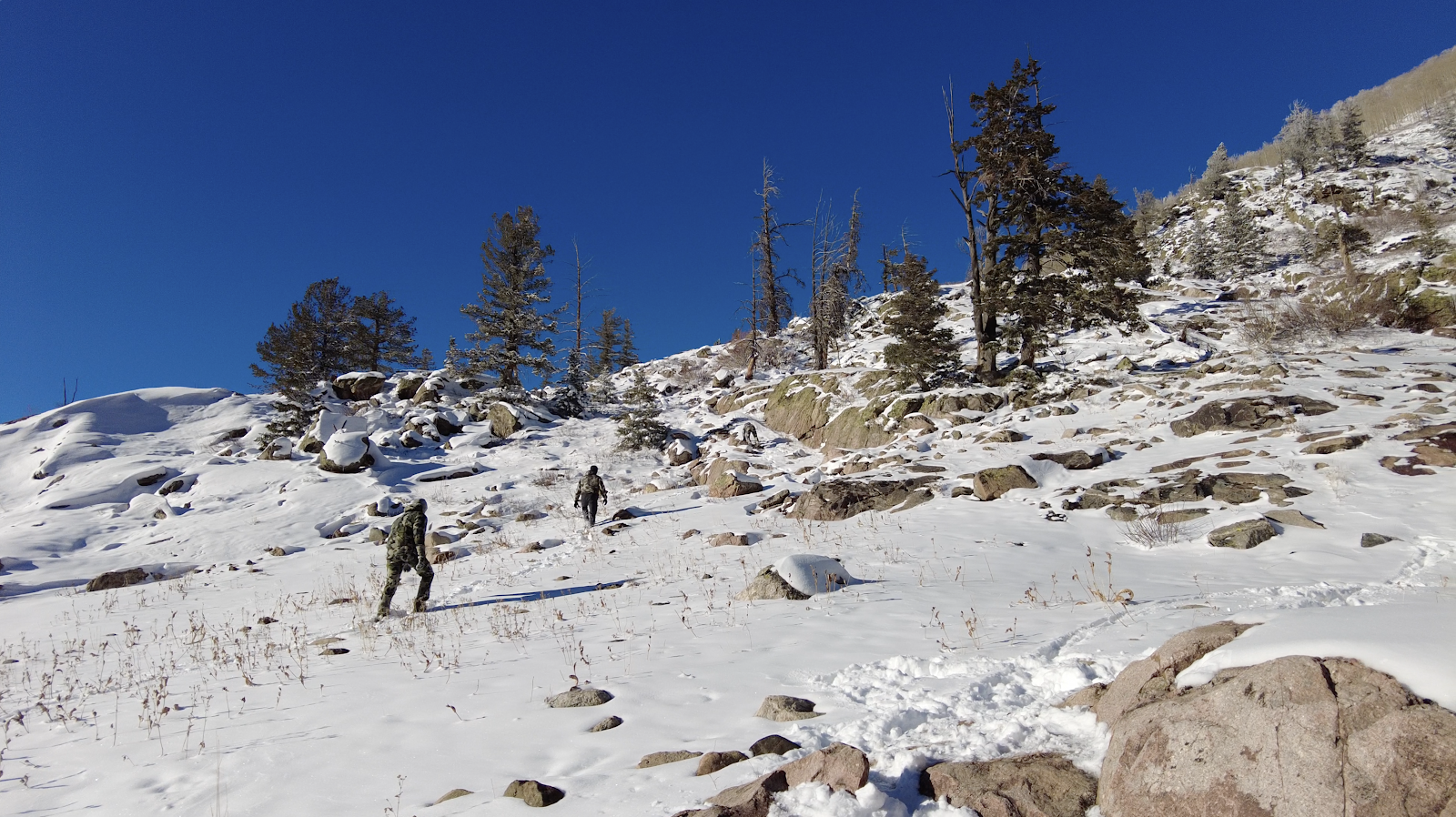
I'll save the insights from that hike for future articles. All I'll touch on here is that it's something everyone should experience at some point. I want to find a way to incorporate it more regularly, somewhere between quarterly and annually.
Post hike we had dinner and shared what came up for us so we could start the integration process. Integrating the lessons from a deep experience like that is the difference between "getting high" and actually working on yourself, and we didn't want to waste the time we'd invested in ourselves that day.
Dialing In & Reaching the Hunting Lodge
The last thing we needed to do pre-hunt was a final check with our guides to make sure we were proficient enough with our rifles to be trusted.
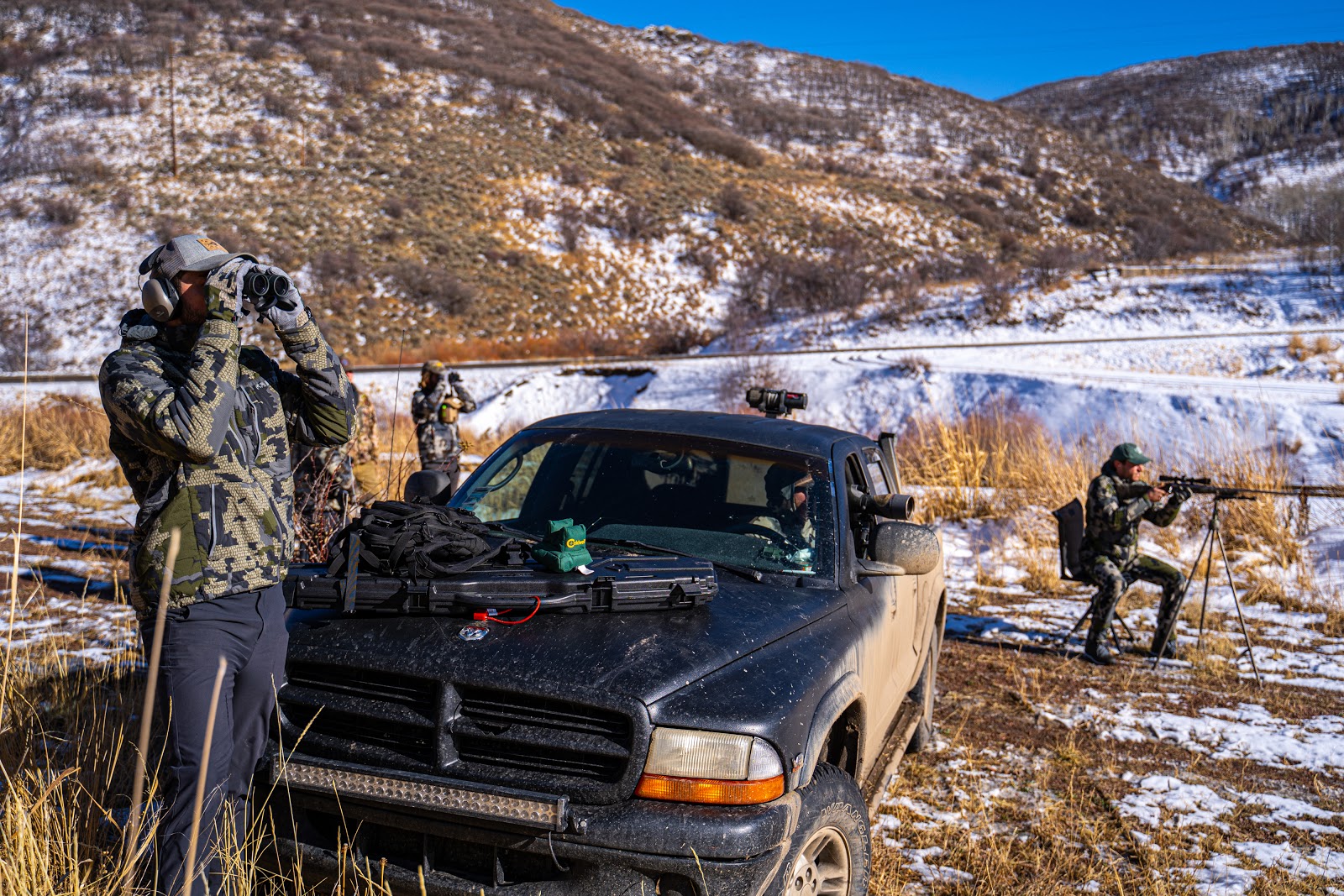
This ended up being smart since one person's rifle had gotten jostled in transit and wasn't shooting accurately, so he had to borrow a rifle from one of the guides. The rest of us were good to go though, so after some paperwork, we went to our new lodge to relax and have an early dinner before the first hunt.
The lodge was incredible, and the perfect spot to relax at in-between hunts. We had a hot tub, sauna, huge dining and living area, and were surrounded by beautiful mountains on all sides.
Plus, it was only 15 minute away from our hunting grounds, which saved us some time in the early mornings.
We had to be up and out of the lodge by 5:15 the next morning, so after making sure all our gear was ready, we checked in together one last time and got to bed early.
Hunting Day 1
The hunt started with a blizzard.
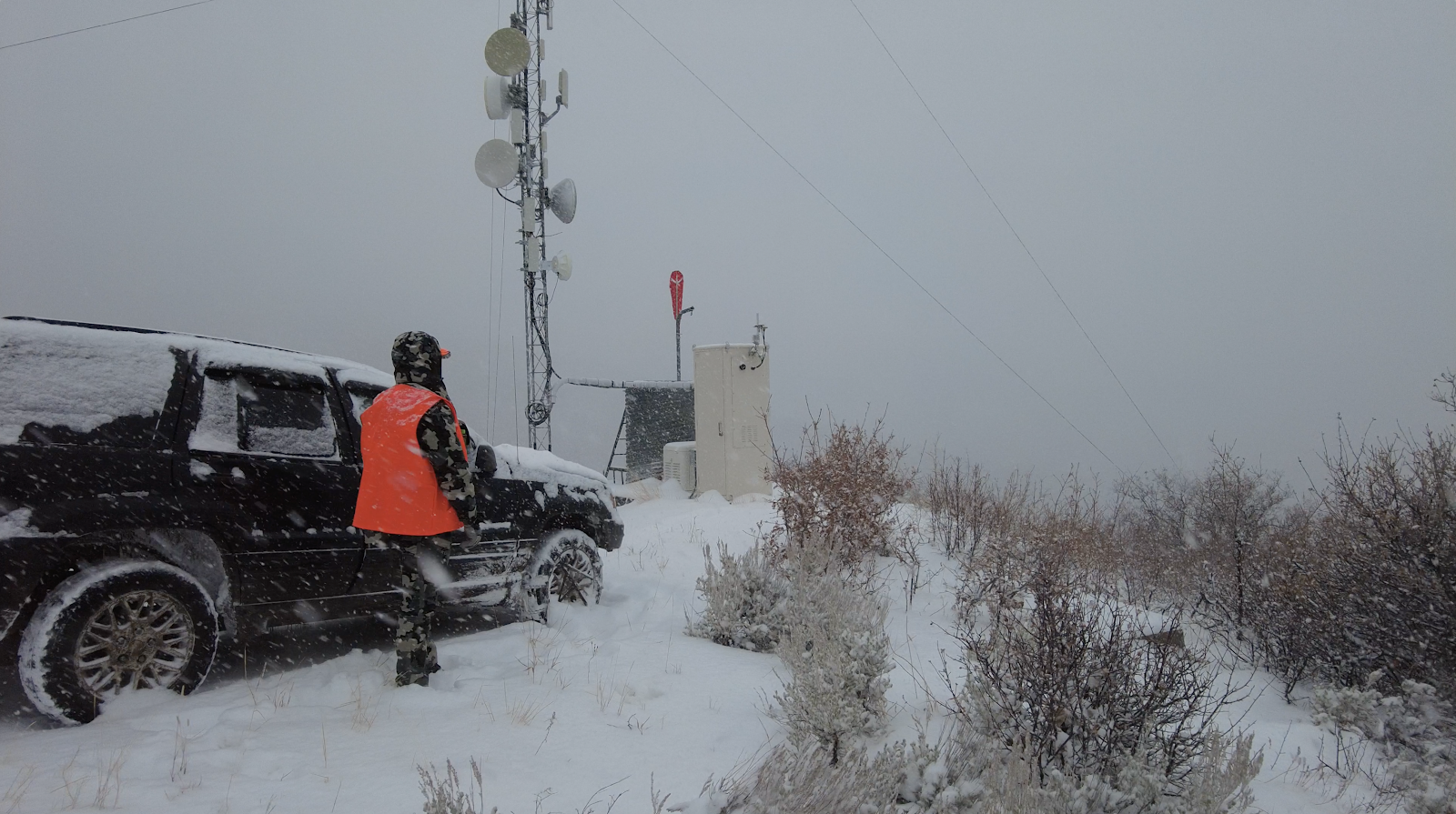
We woke up to nearly a foot of new snow on the ground and very limited visibility. The guides had told us this might happen this morning given the forecast, and that it didn't necessarily mean no hunting. Just that we needed to get into position and wait for the snow to stop, and when it did, the elk would likely come out for food and water.
So we split up into our vehicles and headed into position. There were six of us hunting with three guides, so we broke off into groups of two. Chris and I were with our guide Josh, a younger guy who flies in for the season and hunts more than half the days of the year.
The kind of hunting we were doing is called "spot and stalk." You find some high ground to start at where you use your binoculars to look around for elk or elk tracks. Once you "spot" them, you go to those tracks or the elk and try to stalk in close enough to get a good shot.
Our position that morning was the Radio Tower, a cellular network array that sat on one of the highest peaks of the property and gave unobstructed views of most of the hunting area. Unobstructed normally, anyway. Today all we could see was snow.
After a few hours and a couple teasing pauses in the snow fall, we gave up and went back home. The snow wasn't stopping much, and it didn't look like it would until early in the afternoon. So, we went back to the lodge, to wait till we would have a better chance.
It might have been cold and snowy when we got up, but when we got back to our lodge the snow had stopped there and it was a beautiful clear morning for hanging out on the deck.
One big benefit to how Mansal organizes these trips over what you might get with a normal hunting guide is that he brought all of the food for the trip for us, so we weren't stuck eating the frozen food and cereal that's typical of most hunting lodges.
After a relaxing morning, it was time for the second hunt.
We got back out around 1pm, earlier than usual, since we were both looking for the elk emerging from the snowfall and the elk coming out before sunset.
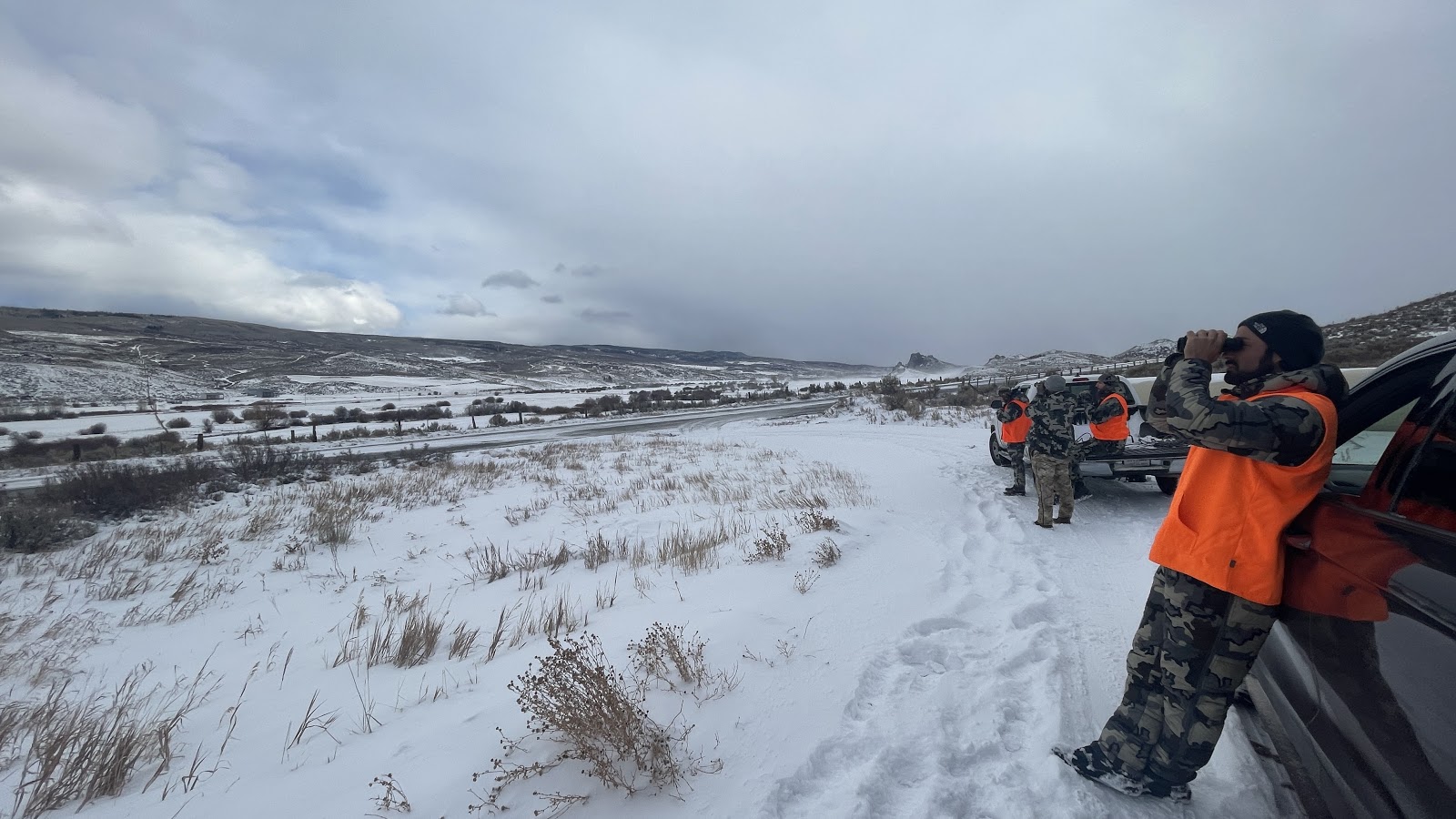
After some spotting from outside the property, Josh Chris and I started in a new spot, a bluff overlooking a big valley leading down to some water that the elk supposedly liked to come out to.
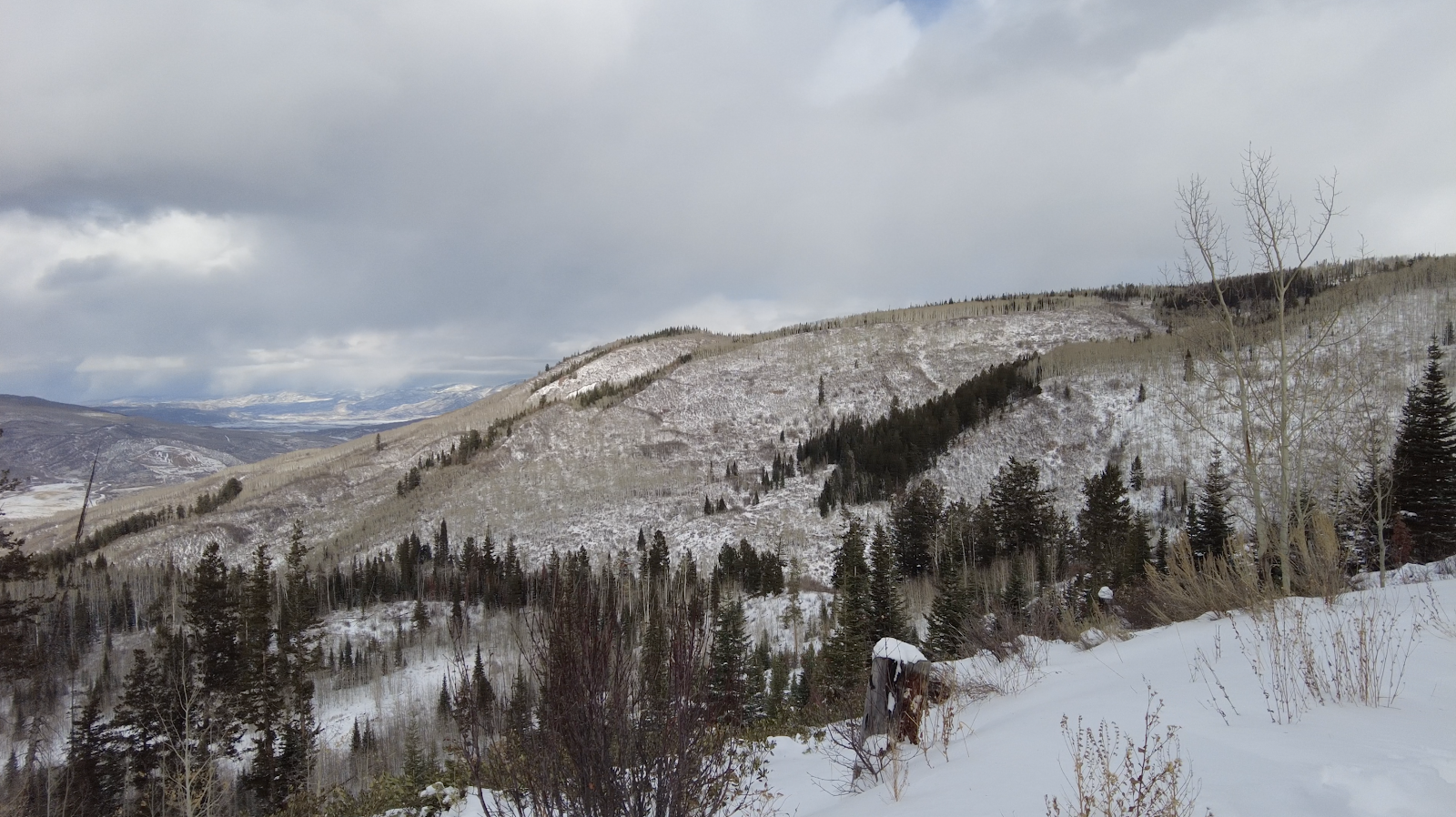
This time we were luckier: we immediately saw two of them on the opposing hill, but unfortunately it was someone else's land so all we could do was wait and hope they'd move down to our side.
We knew their tracks would be easy to follow in the snow if they moved, so we decided to go check a spot past the radio tower in the meantime. On our way up the hill though, the 4-wheel drive on our old jeep broke, it slid off the road, and we ended up having to rechain the tires and push it out of a ditch.
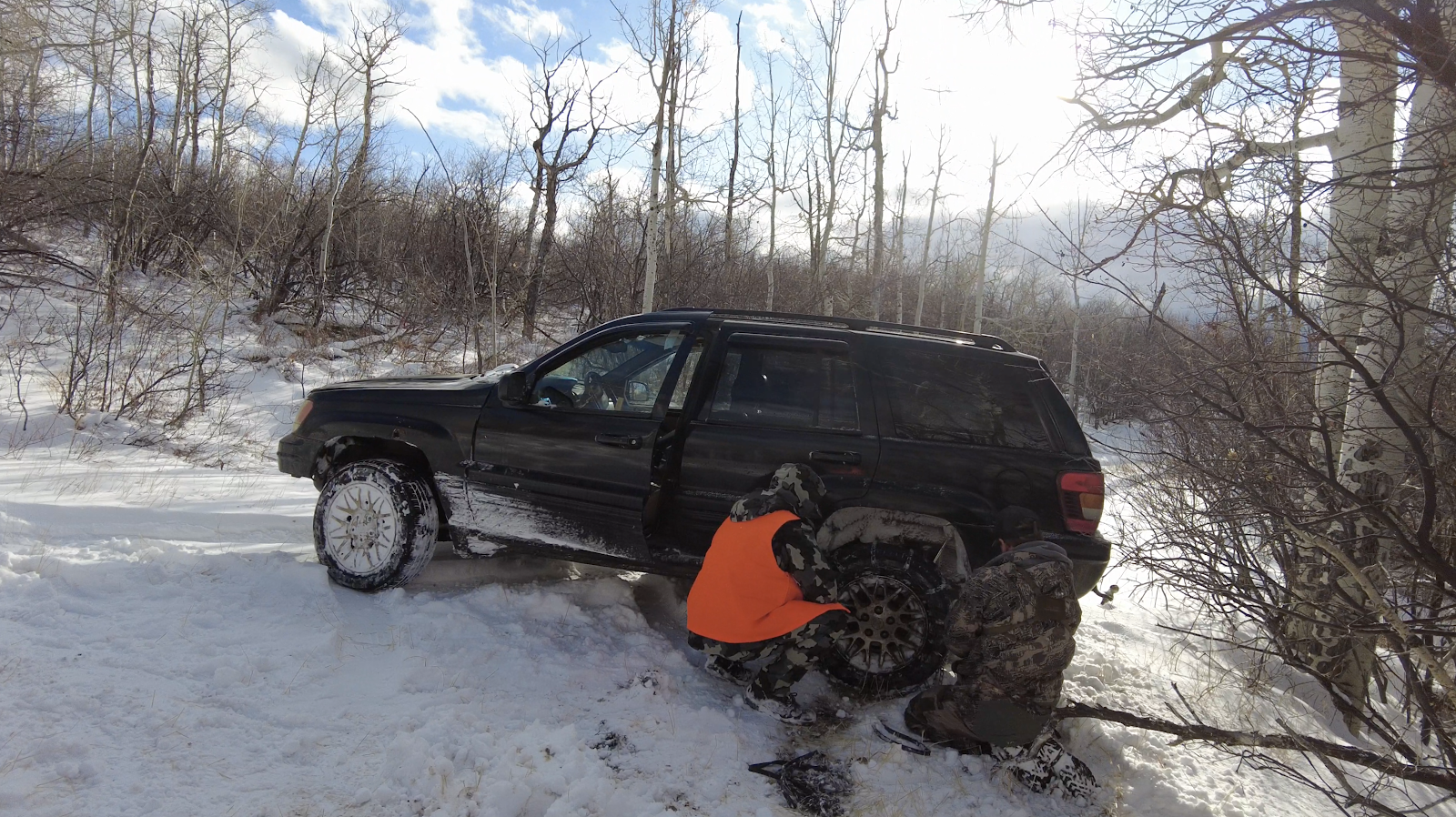
Our now handicapped jeep wasn't likely to make it up the slope we were trying to go up, so instead we went back to the same radio tower spot from this morning.
The view was quite a bit clearer now, but we weren't seeing any elk, so we moved on.
On our way back to the first spot, Josh suddenly stopped the Jeep to inspect a set of elk tracks crossing the road. He followed them up the hill in one direction to walk with them and try to get a gauge for how many were there, and right when he told us it was a cow and a calf, the cow popped her head up about 150 yards up the hill.
Chris grabbed his rifle and got into position, and we spotted two more elk up on the hill with the first. By the time he was set up, though, they'd disappeared, and we weren't sure where they'd gone.
I walked down the road and checked further along the hill when they popped up again, looking down at us, and Chris was able to come get set up. They walked out of the brush on top of the hill for a brief moment, he took the shot, and the chase was on.
We knew he'd hit her, but elk are tough animals and you never know how far they can run even after a good shot, so we needed to go find her. We sprinted up the hill after her -- no small feat in 6-12 inches of snow at 9,000 feet of elevation -- and started looking for her trail.
It wasn't hard to find. We knew where she'd been, and there was a clear blood trail, so we started tracking her through the snow. Her tracks eventually diverged from the rest of the group as she started going more downhill, and with sunset getting closer, we knew we needed to find her soon.
We tracked her for more than an hour, through over a mile of snowy, hilly brush, till we got to the point we were dreading: the property line. She'd jumped over the low fence and walked along it for a while, but then turned deeper into the neighbors property. Most property owners in hunting territories like these will let you continue tracking a wounded animal onto their property, but not this one. After half an hour sitting by their fence trying to get in touch with them, they eventually picked up the phone and said we couldn’t follow her, and all we could do was turn back.
It was a worst case scenario: not only wounding an animal, but not being able to retrieve her. We never found out what happened to her. We can only hope that the owner of the land went out and got her himself and didn't let the meat go to waste if she did die.
Depressed and exhausted, we climbed through more brush to get to a road, and went back to camp for the night.
If there was one lesson we learned, it was to slow down. Chris and I had both felt extremely rushed in the moment, and we knew moving forward we didn't want to take any shot we felt rushed into. It was better to go home empty handed than to rush into a bad shot and end up hurting an animal.
Slowing down had been a core insight from my medicine hike. One thing that kept recurring during my trip was how many great things in my life have come from slow, consistent effort, and how many losses have come from reckless speed. Speed had brought great things, too, but finding a way to slow myself down a bit and make more intentional decisions was something I knew I needed to work on.
Maybe nature was trying to teach us something.
Hunting Day 2
After a rough first day, the weather decided to be kinder to us this morning.
With our handicapped Jeep we were limited by the spots we could reach, so we started off as usual at the radio tower.
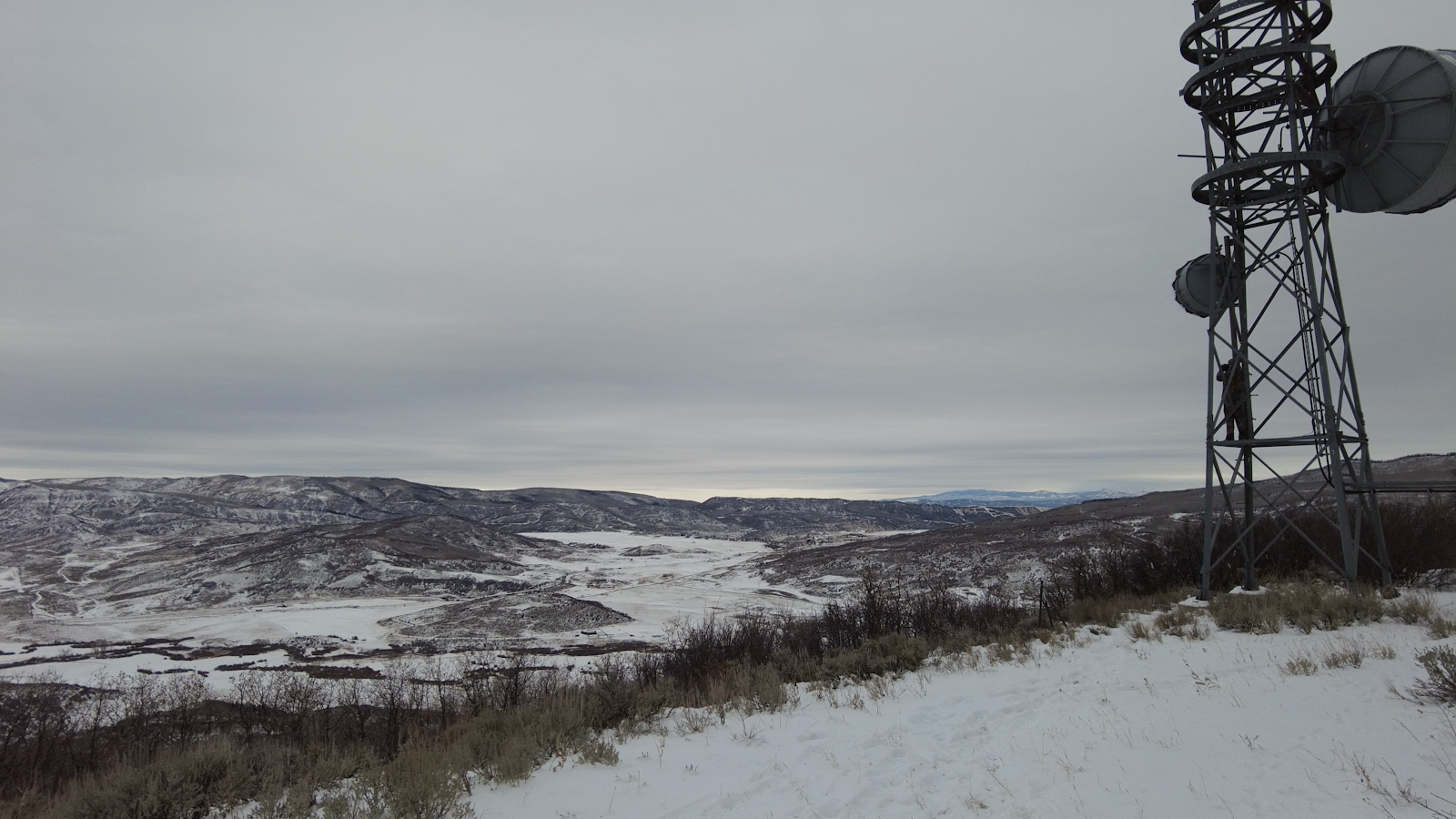
But after spotting at the radio tower, the hilltop from yesterday, and driving around looking for tracks, we were coming up empty handed. No elks to be seen this morning.
Back at the lodge it turned out no one else had seen any either. After such an action packed afternoon yesterday we were all a little disappointed, but we still had three more hunts to get our elk.
In the afternoon we started at the radio tower again, then decided to go back to the hilltop where we'd seen the couple elk the first day. As we were walking out to the spotting point, there were a number of elk tracks joining and veering off of the path we were walking on.

It wasn't clear how long ago they had walked through there but it had to have been in the last 24 hours so hopefully they were still nearby.
No one else was seeing any elk, so we stood at the point for about 45 minutes taking turns scanning the landscape with our binoculars. Josh had taught us quite a bit about spotting elk and their tracks, and it was starting to feel a little more natural.
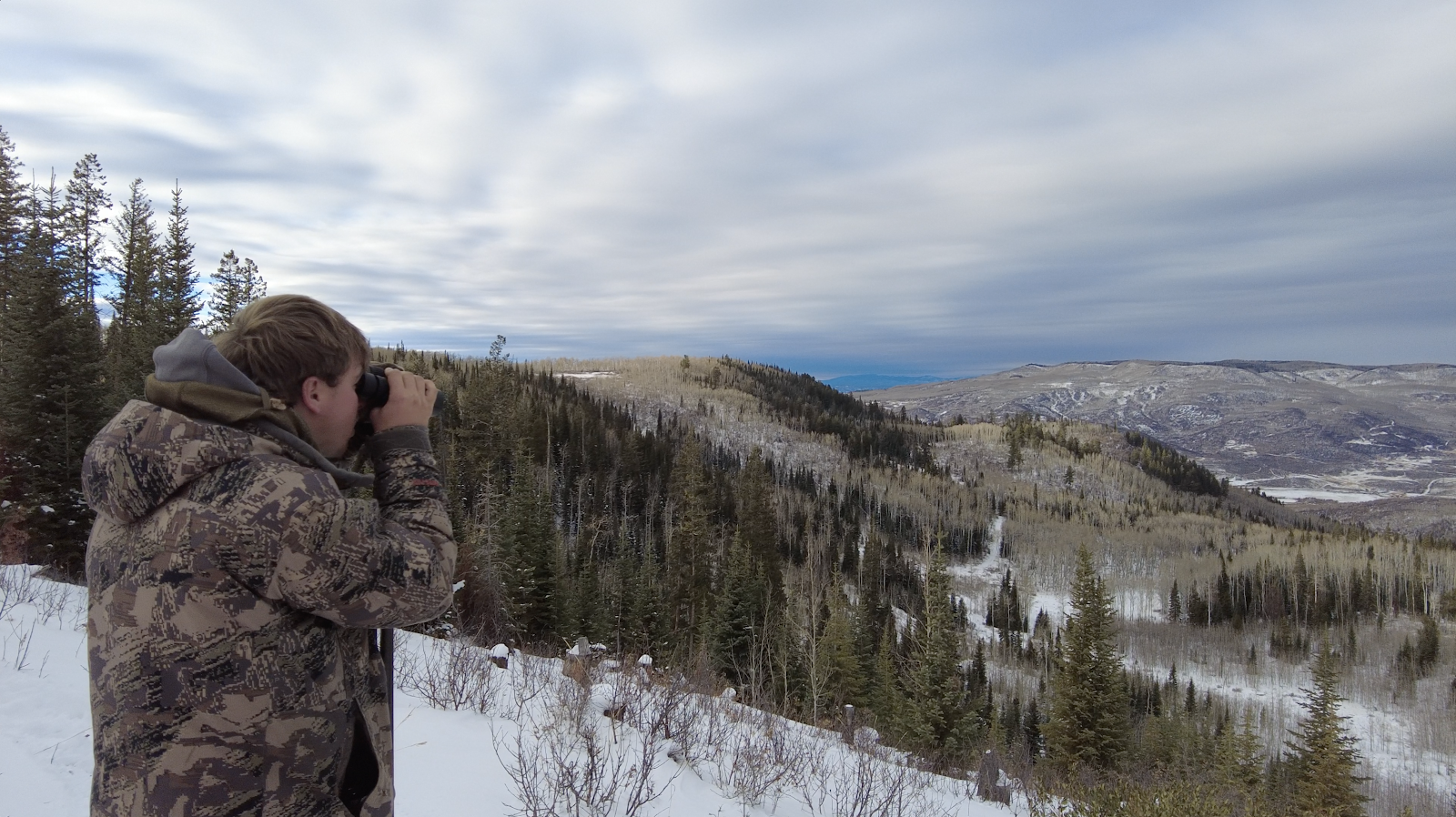
Suddenly Josh spun around, wide-eyed, and whispered at me to grab my rifle. An elk had just popped out of the tree-line 200 yards downhill from us, and she had no idea we were there. I quickly got set up on my tripod and had her in my scope, but she wasn't giving me a good shot. She was quartered away at such an angle that I'd be most likely to hit her in the butt if I was even slightly off target, which wasn't a risk I was willing to take.
Could I have made the shot? Maybe. But I didn't want to injure another animal from rushing. So I watched her through my scope for what felt like minutes, when a second elk popped out of the trees behind her and bent down to start eating.
My patience had been rewarded. This elk was 40 yards closer, and was giving me the perfect broadside shot. I got her lined up, took a deep breath, and took the shot. We didn't want to take any chances today so Chris also followed up with a shot on her, and then we took a few more as she ran off.
The first thing I felt was fear. She ran downhill out of view, so there was no telling how far she had gone. Did I mess up, and were we going to spend another evening tracking in the snow? We scrambled down the hill to get to where we'd hit her, and started following her tracks through the brush.
20 yards later, relief. She had collapsed under a tree not far away, and it was clear we had taken a good shot. She raised her head when we got closer so I put a final shot in her to help her go faster, and it was over.
Chris and Josh worked back up the hill to make sure the other elks weren't hit in the crossfire, and I had a moment alone with her.
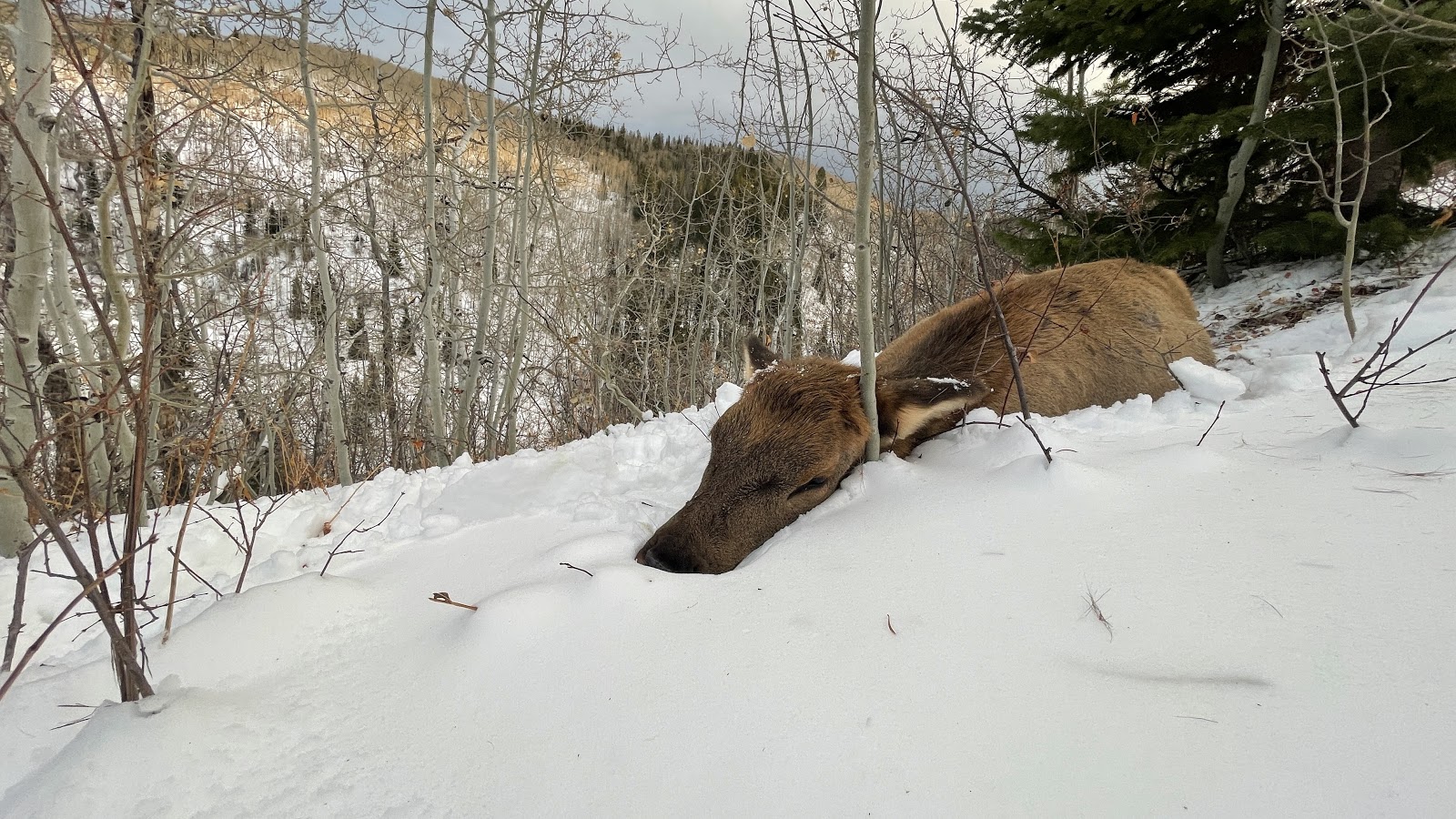
I quietly thanked her for giving her life to me, my friends, and my family. I also thanked her for affirming the lesson from yesterday, about how important it was to wait and not rush into making bad decisions. I started to tear up when I was stroking her head and found the same burrs in her fur that I have to pull out of Pepper and Tahoe. She was a beautiful animal, and it wasn't an easy experience. It's easy to forget, but every time we eat meat we're contributing to taking the life of an animal just like her.
When Chris and Josh got back, it was time to start packing her out. She was young, but still around 200 pounds, and over 200 yards downhill of where the Jeep was parked. Worse, she'd popped up so suddenly we hadn't been totally prepared. None of us had our packs, we didn't have any cord to use to drag her up, and we didn't have game bags if we wanted to start quartering her on the slope.
The first thing we tried was dragging her up the hill by her legs and Josh's belt. That worked for about 40 yards, but it was exhausting, and the snow was piling up under her making it harder and harder to drag her. It was almost pitch black, so we gave up and Josh started quartering her in the snow.
By the time her got her back legs off, the rest of the group had showed up, and everyone pitched in to carry her legs and steaks up the hill or help with the quartering.
After an hour of working together in the snow we were done, and I carried her hide and head up the hill to the car. It was exhausting, but we refused to waste any part of her, and I wanted to endure the challenge of getting the heaviest part of her back to camp out of respect for what she'd sacrificed to us.
That night we had some of her liver raw as an appetizer. I'd never had raw liver before, but it's quite easy to eat. You can cut it up into tiny pieces and shoot it like taking a pill. It's worth doing, too, since it's one of the most nutrient dense parts of the animal.
Exhausted, we finished up our dinner later than usual, and crawled into bed for the last day of hunting. So far I was the only one who had gotten an elk, but hopefully we'd have more luck on the last day.
Hunting Day 3
We woke up and had a light breakfast of elk liver, and headed off to our final morning hunt.
Chris, Josh, Mansal and I had a special mission for the morning. When Chris and Josh left me alone with my elk yesterday, they realized we had accidentally injured a second one that was with her. When we watched the footage of what happened, the elk had cut back right in front of the mine at the worst possible moment, and been clipped by one of our shots.
She was bleeding and Chris and Josh had tracked her for a bit last night, but we knew we needed to go look for her and make sure she was okay today.
So we set off from where I'd gotten my elk to see if we could find her.
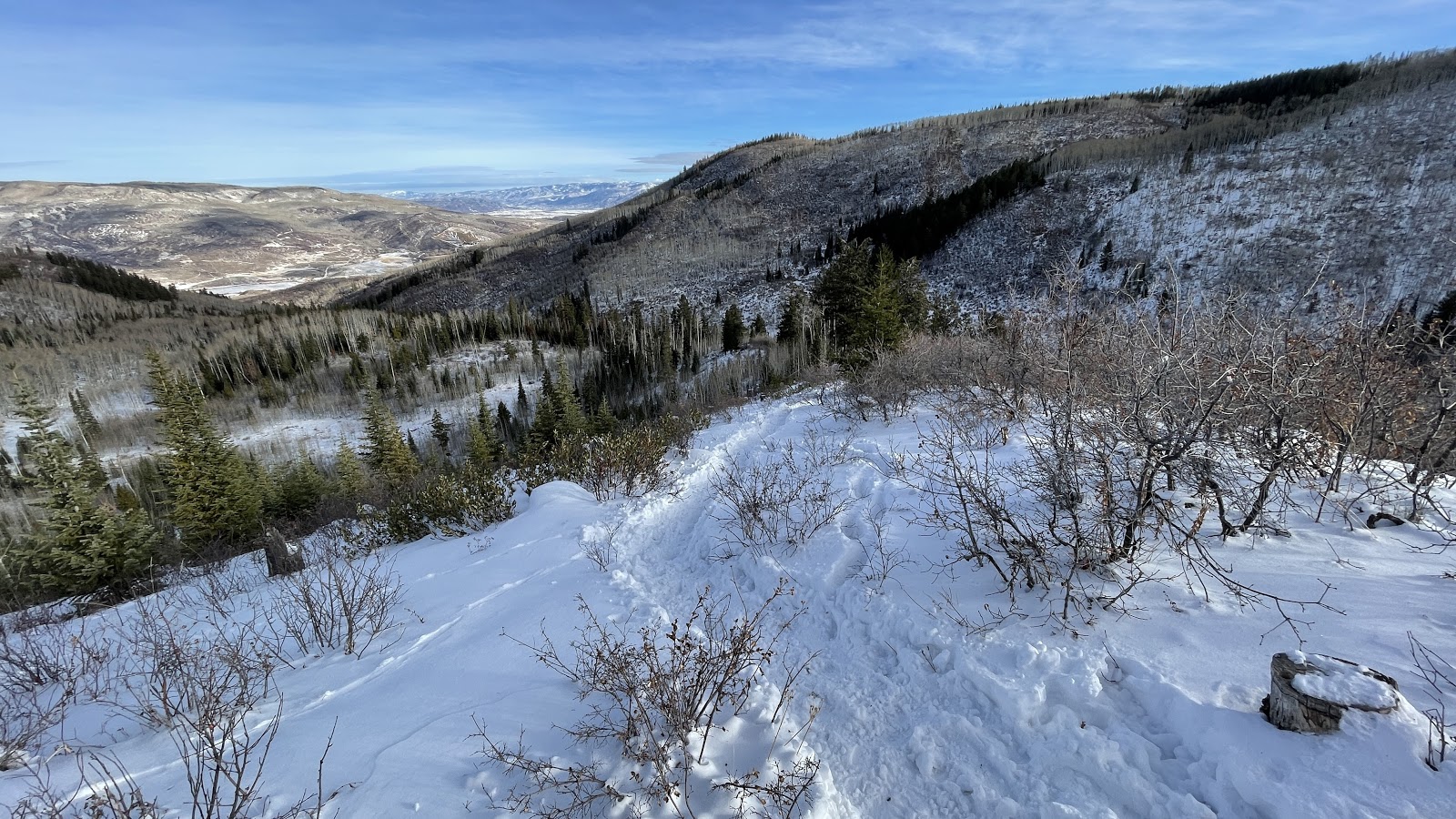
There was a blood trail, but it was light. However she got hit it wasn't particularly bad, and we weren't sure if it would even slow her down.
We also weren't the only ones on her trail. Almost immediately after her tracks started, we saw tracks from a number of coyotes converge on her trail and start following it. That introduced another fear: that we might not have killed her, and subjected her to getting eaten by coyotes.
Good signs started presenting themselves though. For one, she wasn't just going downhill. She was climbing some pretty steep terrain which suggested she wasn't hurting much. Also, the blood was only landing below her tracks and not getting wiped off on branches, which suggested it was a wound towards the top of her back and not in her side where her lungs and guts could have been hit. And the blood trail was getting lighter.
After almost a mile and a half it was clear she was doing well and we hadn't caused any serious harm. Her calf was with her, she wasn't slowed down, the bleeding had just about stopped, and even the coyotes had given up following her. We breathed a sigh of relief and headed back to our Jeep.
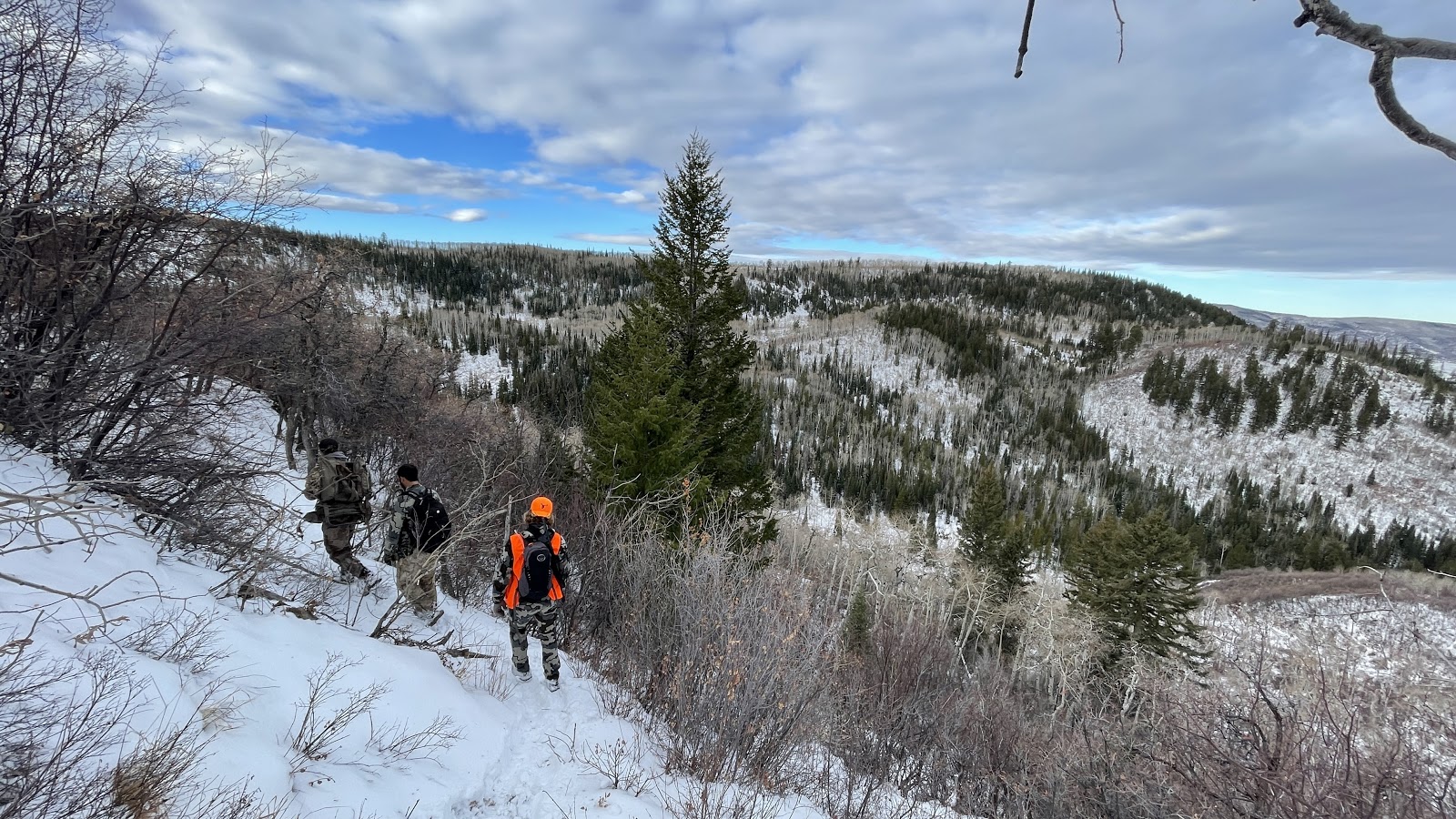
I wish I had some epic story about how everyone else got their elk on the final hunt of the day, but it didn't happen. We saw no elks that morning, or afternoon, and ended up all leaving empty handed on the last day. It was disappointing, but considering what an incredible experience it had been anyway no one regretted making the trip.
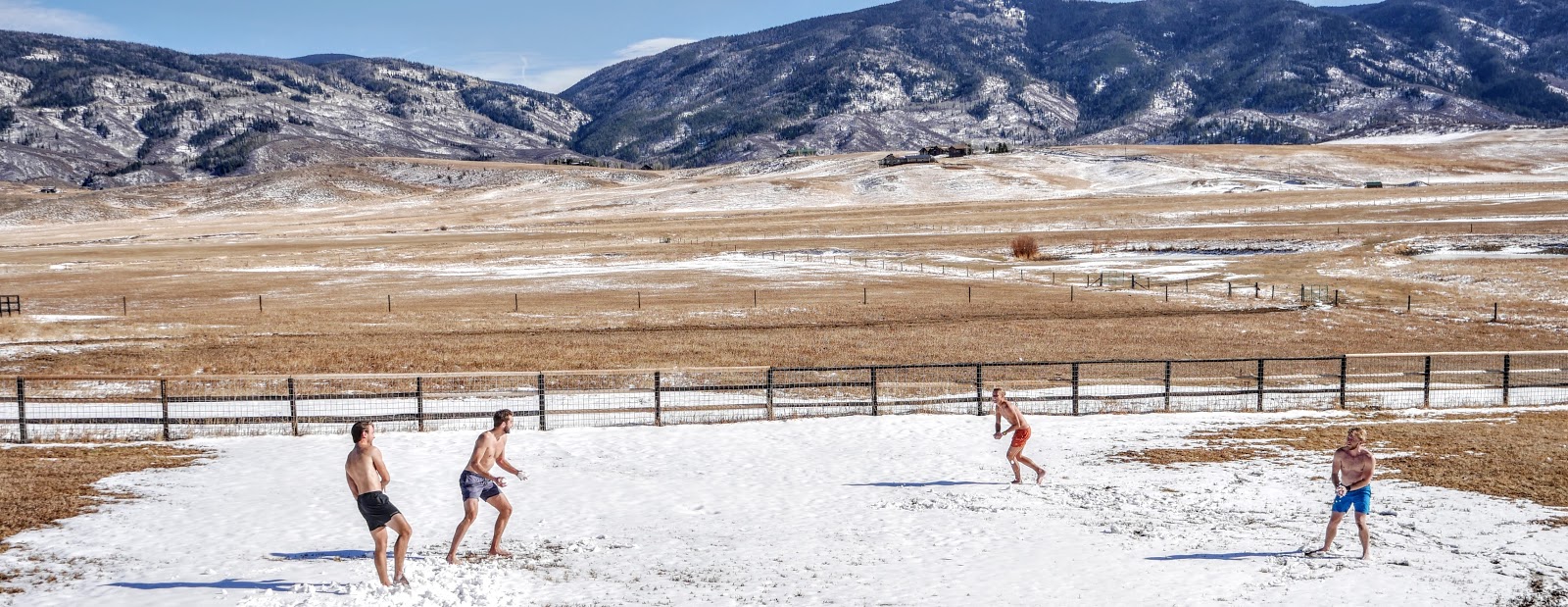
(photo credit: Mike Pullano)
That night we had steaks from my elk's backstraps, and her heart, and closed out the ceremonial part of the trip.
Reflection
This elk hunting trip was among the more memorable experiences of my life.
It required me to seriously level up my marksmanship, and proficiency as a hunter. It brought a whole new level of respect and empathy to eating meat, beyond what I'd already gained from my first trip. It gave me more clarity on my work and priorities than I'd had all year, both from the plant medicine and the extensive time for integration. And it was a lot of fun to get to hang out with new and old friends in such a beautiful place for a week.
One thing in particular I took away from it was how important it is to take breaks. To step back and give yourself time to reflect. And to get out into nature and turn off the always-plugged-in part of my brain for a bit.
Looking forward to 2021, I want to find more time for trips like this. Definitely more hunting, but also more time away from the city out in nature with friends. It really helps get you into a different headspace, and I think it's a headspace we're severely lacking in our day to day lives.
If you want to do a trip like this, definitely reach out to Mansal and Sacred Hunting. He's doing amazing work there, and I think everyone who eats meat could benefit from having this kind of experience.

